Any finishing material that is put over a floor structure to create a walking surface is referred to as flooring. This contributes to aesthetics and comfort in different areas including the bathroom. When using vinyl flooring, you might be wondering if it should go under the toilet. We've checked reliable sources to find answers for you.
Regardless of the flooring's material—wood, vinyl, tiles, etc.—it is always regarded as best practice to place a toilet on top of it. The toilet flooring will normally appear better if it is placed on top of vinyl plank flooring, and the floor would support the toilet's weight rather than the pipes if it is done this way.
In this post, we'll take a closer look at vinyl flooring as well as other popular bathroom flooring options. We'll also see why flooring should go in before installing the toilet. So hang on and read till the end to learn more.
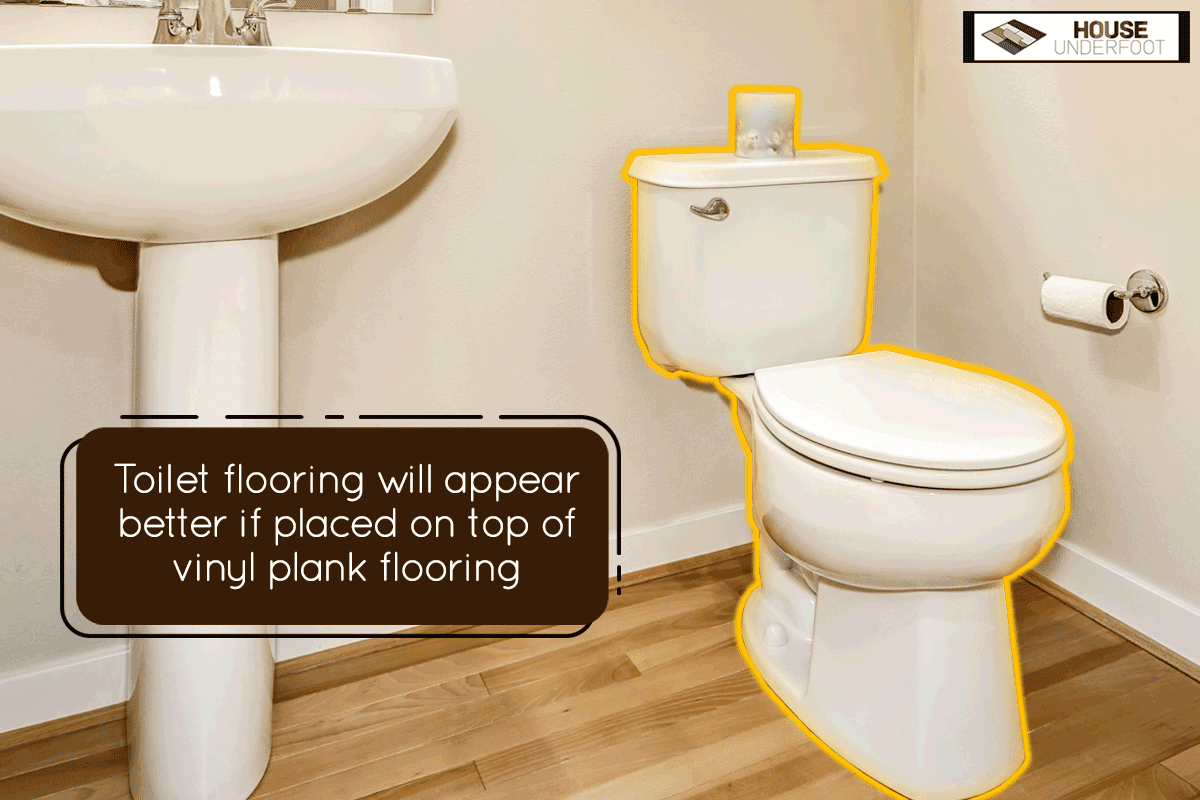
Vinyl Flooring [ Features]
A form of flooring known as vinyl has a polymer core constructed of polyvinyl chloride, or PVC. Vinyl flooring consists of PVC and Vinyl constructed of stone. Any space looks amazing with vinyl floors since they are typically coated in colorful paper or textile fabrics that mimic the appearance of stone or wood.
Plastic is used to create vinyl flooring, which has a surface pattern that resembles wood. Vinyl floor coverings are primarily made of colors, trace stabilizers, polyvinyl chloride (or vinyl) resins, and a carrier sheet or backing. Ethylene, which comes from crude oil, is used in the production of polyvinyl chloride.
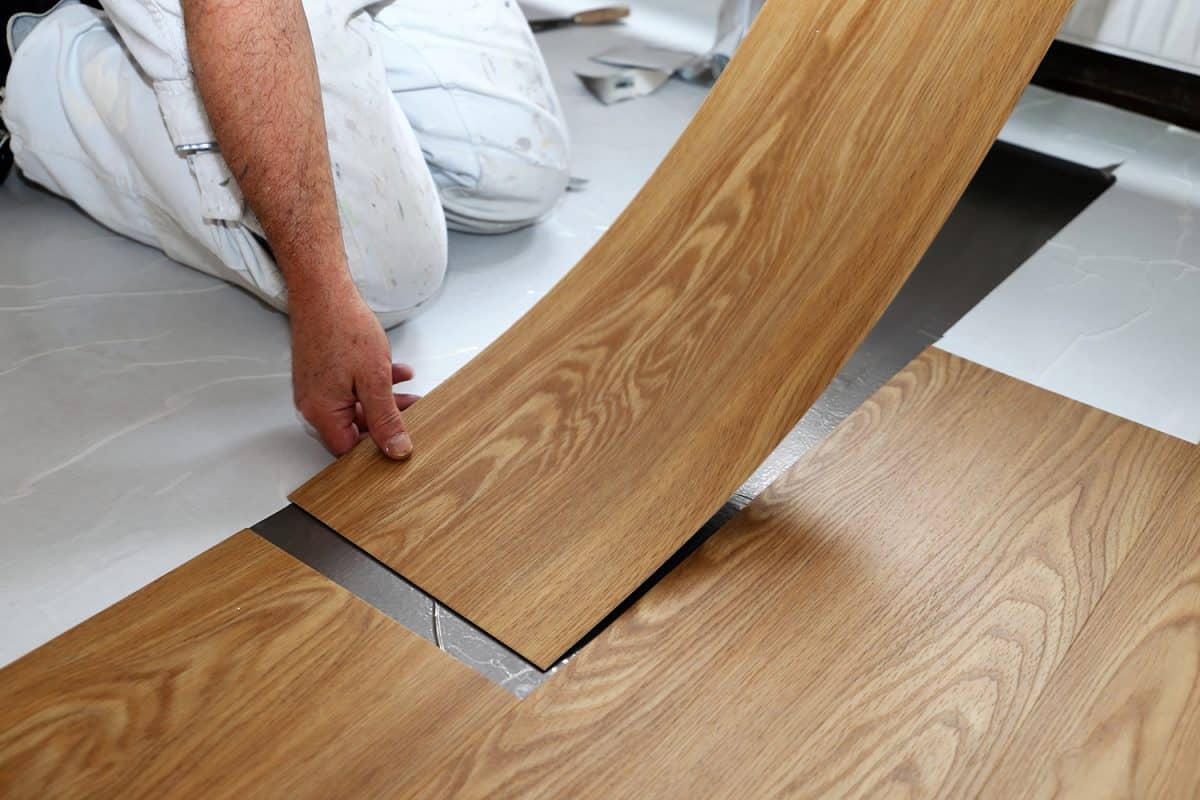
Advantages of Vinyl Flooring
Homeowners all over the world are choosing vinyl flooring as a more and more popular option. Depending on the type and quality of vinyl flooring you select, the benefits can be very different.
It is soft underfoot, resistant to damage and moisture, simple to install and maintain, inexpensive, and available in a variety of colors and designs.
It can handle challenging messes, cleans up easily, provides eye-catching looks, and is incredibly economical. Vinyl flooring is a form of resilient flooring that combines strength and functionality with authentic design and style, making it ideal for households with active children.
Can You Fit a Toilet On Top of Vinyl?
In order for the toilet to stand on a surface that can withstand the weight of people using the item, vinyl plank flooring can be installed around and under the toilet in your bathroom.
Not only should vinyl plank be laid around a toilet, but it should also be installed underneath the toilet. The toilet provides the support it needs to maintain its own weight by having a vinyl plank installed underneath it.
Should Flooring Go In Before Toilet?

You should install flooring before adding the toilet. The toilet is designed to be placed on the floor.
Incorrect installation can lead to expensive problems down the line, especially if there are any leaks or flooding. You can save yourself time, money, and heartache by getting it right the first time.
It is necessary for the flange of the toilet to sit atop the finished floor. In other words, the flange's bottom edge must be on the same plane as the toilet.
What Are The Problems With Vinyl Plank Flooring?
The following are issues associated with the installation of vinyl plank flooring:
- Warping: This is the term used to describe how your vinyl plank flooring may expand when the temperature changes. If your floor is exposed to direct sunlight, you can encounter it while installing it.
- Peaking: Your floor may peak if two vinyl planks collide and their joints rise. Peaking most likely occurs when there is no room between the planks for contraction and expansion.
- Mildew and mold: Vinyl planks that have mildew and mold may have excessive moisture levels and water leaks. Mildew and mold are two forms of fungi that spread quickly and are extremely difficult to eradicate. IF you ignore them, they might even be damaging to your health.
Some issues that you might experience but not related to the installation process include:
- Susceptibility to stains and discolorations: Vinyl plank flooring is susceptible to stains and discolorations, particularly if you spill liquids or food on it. The floor quickly absorbs items, making it laborious to remove them.
- Repairing vinyl planks can be challenging: Repairing vinyl planks has the drawback that, in certain cases, you must replace the entire area of vinyl planks in order for them to appear beautiful once again.
- Toxic chemical emission: The fact that vinyl flooring can produce volatile organic compounds is one issue that disadvantages it. One reason is that phthalates, pollutants found in vinyl flooring, travel into the air you breathe and collect in household dust.
- Vinyl floor peeling and cracking: Additionally, your vinyl planks will peel and break over time. This occurs as the flooring's adhesive corners deteriorate and begin to curl. The appearance will be fairly nasty and unappealing, and it causes dirt to collect beneath the planks. If this isn't repaired, more dirt will be trapped under your vinyl planks, making them seem even worse.
Is Vinyl Flooring Really Waterproof?
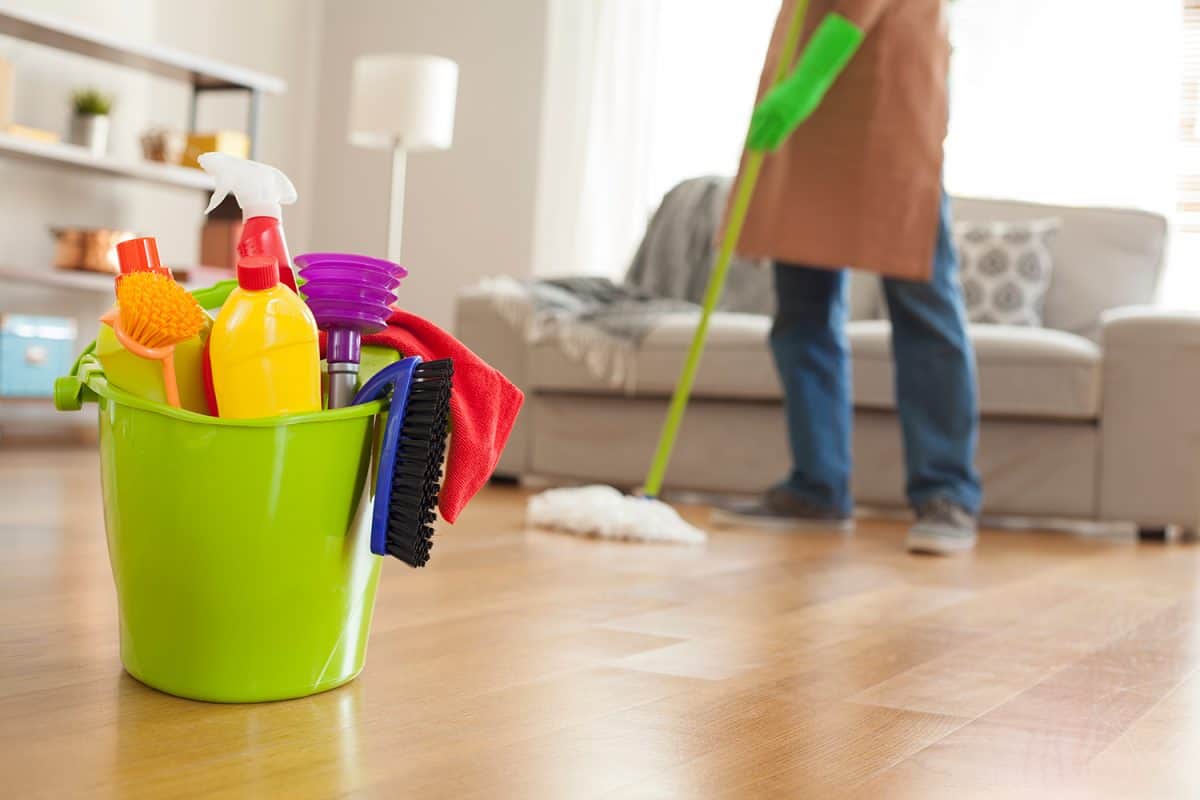
Certain types of vinyl plank flooring are water-resistant, which means they can withstand levels of wetness without becoming damaged. It is perfect for rooms that could see some dampness, like an office or a guest bathroom, or a toilet in your house.
Other types of vinyl flooring are waterproof and will not let any moisture in. For industrial kitchens, dining areas, laundry rooms, and other spaces where water spills are frequent, this is the finest choice.
Waterproof flooring is one that not only resists general spills but also has an impenetrable surface and construction. Usually, a locking mechanism with tight joints is also used to lay waterproof flooring.
The primary components of vinyl flooring are what really determine whether it is waterproof or water-resistant. The primary components are waterproof on their own. Installing a glued-down rather than a click-lock method is not, though.
Types of Vinyl and Porosity
Ultimately, SPC, WPC, or a hybrid type is required if you want a vinyl that is completely waterproof. Here are some types of vinyl flooring and their level of porosity.
- Rigid Core/SPC: Both stiff core vinyl and stone plastic composite are intended to be completely waterproof. This means that not even localized humidity or moisture may cause the planks in your flooring to swell or be damaged the tight-jointed mechanism.
- WPC: Wood plastic composite cores, which are made of a mixture of wood pulp and plasticizers, are waterproof. In the event that an unintentional puddle is left on the floor for a period, the composite materials also resist swelling. Additionally, there is no need for adhesives because this flooring is installed using a glue-free locking plank method.
- Hybrid: A cutting-edge type of flooring is hybrid flooring, like Raintree. It provides the best of both worlds by combining real wood and hardcore. In addition to being waterproof, it is also stain- and fade-resistant for added convenience.
What Is The Best Flooring For a Small Bathroom?
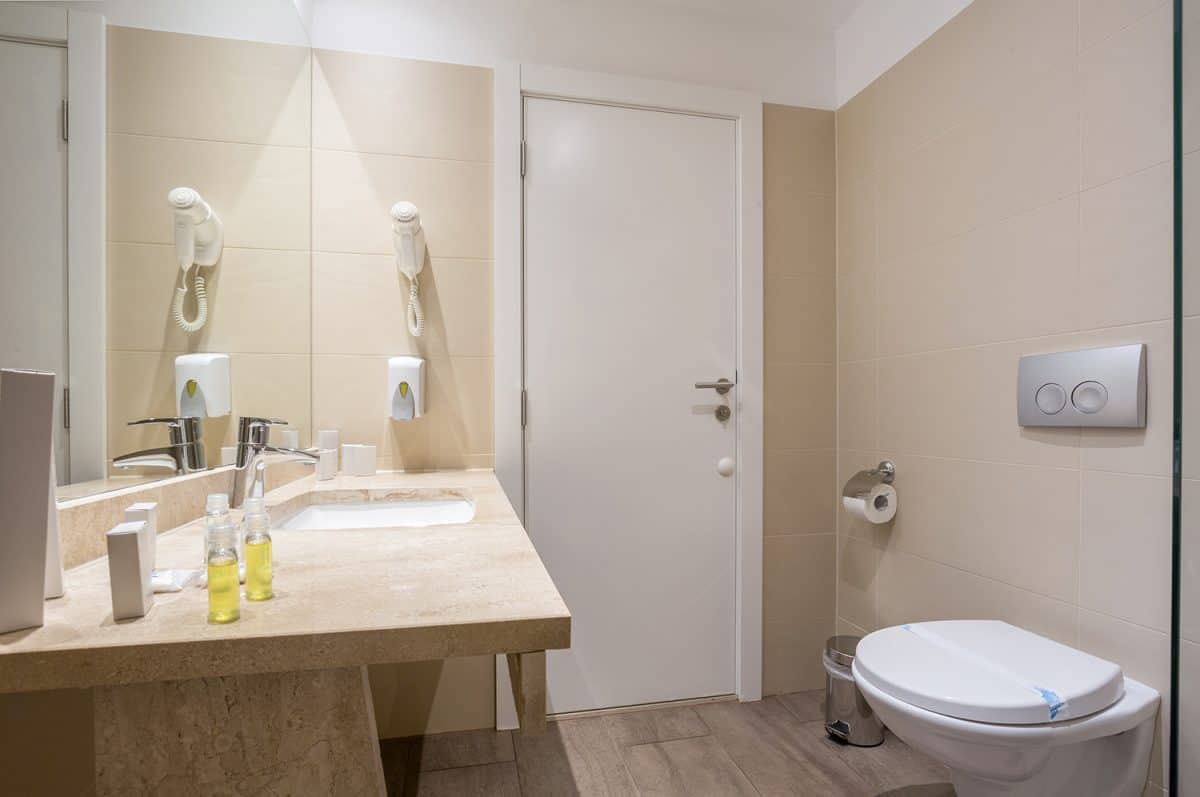
If you intend flooring a small bathroom, here are materials you should consider using.
Ceramic Tiling
Ceramic tile is one of the most popular types of bathroom flooring. In addition to being incredibly strong, waterproof, and stain-resistant, it has a simple, timeless appearance. Select a tile that is certified slip-resistant to reduce the risk of slip-and-fall incidents in the bathroom.
Vinyl Floor Covering
One of the least expensive bathroom flooring options is vinyl which is stain-, waterproof-, and easily cleanable. As opposed to peel-and-stick tiles, high-quality sheet vinyl or linoleum will reduce seams where water can seep under.
Bamboo Bathroom
Bamboo flooring is eco-friendly and cost-effective since it is made from a material that is very renewable and can be purchased for as little as half the price of hardwood floors.
Since engineered bamboo planks are much more durable and suitable for moist settings than solid bamboo, they are the better alternative for bathroom flooring. Additionally, they are easy to install, and broken parts are simple to swap out.
Wood and Laminate Bathroom Flooring
Hardwood floors give the bathroom a warm and enduring appearance. They are a classic option that is rarely out of style. Engineered wood, which is constructed of real wood veneer and plywood, is a wise choice for a moist area because it can withstand humidity better than solid wood.
There are also many prefinished choices available that can tolerate high foot traffic and resist wetness. Bathroom laminate flooring is affordable and has the appearance of wood.
Conclusion
The way you choose to floor your toilet is important as this can contribute to the hygiene of your home. We trust that you found the information useful and that you'll be able to make the right choice when installing your vinyl floor.
For more articles on flooring, we recommend these engaging posts:

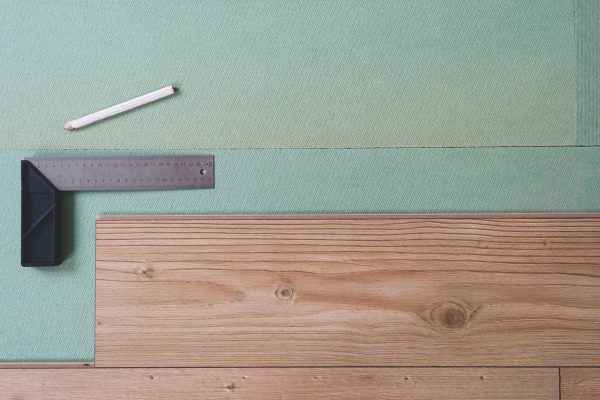
![Laminated flooring planks to be installed in a modern room, Can You Install Vinyl Plank Flooring Backward? [And How To!]](https://houseunderfoot.com/wp-content/uploads/2022/10/Laminated-flooring-planks-to-be-installed-in-a-modern-room-600x400.jpg)
